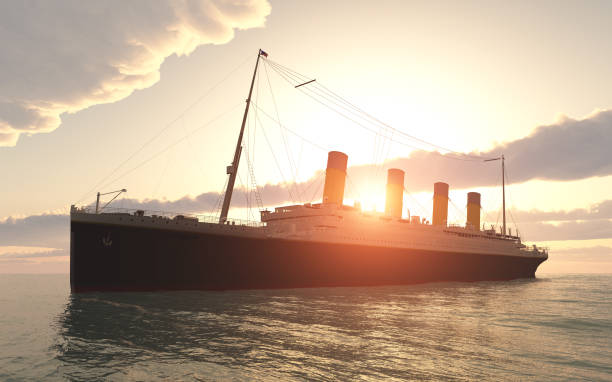Having plunged into the icy waters of the North Atlantic, it’s natural to wonder how cold was the titanic water. In this piece, we’ll be covering some of the major facts of the Titanic crash and answering one question that lingers: Just how cold was the Titanic water that sealed its fate?
Table of contents
When Did The Titanic Sink?
The Titanic sank on the night of April 15, 1912.
How Cold Was The Titanic Water When It Sank?
The water temperature in the North Atlantic where the Titanic sank was bitterly cold, estimated to be around 28 degrees Fahrenheit (-2 degrees Celsius). This frigid temperature played a significant role in the survival chances of those who ended up in the water after the ship’s tragic sinking.
Why Did The Titanic Sink?
The Titanic sank primarily due to a collision with an iceberg. On the night of April 14, 1912, the ship struck an iceberg in the North Atlantic Ocean. The iceberg damaged the ship’s hull, causing it to breach multiple compartments. Water quickly flooded into these compartments, leading to a loss of buoyancy. The Titanic was designed to stay afloat with any two of its compartments flooded, but the damage exceeded that threshold.
The sinking was also exacerbated by factors such as a shortage of lifeboats, inadequate safety measures, and the lack of a comprehensive emergency response plan. The combination of these factors led to the tragic loss of the ship and a significant loss of life.
How Many People Died In The Titanic?
Approximately 1,500 people lost their lives in the sinking of the Titanic. Out of the estimated 2,224 passengers and crew members on board, only around 710 individuals survived the disaster. The sinking of the Titanic remains one of the deadliest commercial peacetime maritime disasters in modern history.
Frequently Asked Questions
Why did the Titanic sink?
The Titanic sank after colliding with an iceberg, which caused severe damage to the ship’s hull and led to its eventual sinking.
How many people were on board the Titanic, and how many survived?
There were approximately 2,224 passengers and crew members on board the Titanic. Approximately 1,500 people lost their lives in the disaster, and around 710 individuals survived.
How cold was the water when the Titanic sank?
The water temperature in the North Atlantic where the Titanic sank was around 28 degrees Fahrenheit (-2 degrees Celsius).
Were there enough lifeboats on the Titanic?
No, there were not enough lifeboats on the Titanic to accommodate all passengers and crew. This shortage contributed to the high loss of life.
What was the role of the crew and passengers during the sinking?
The crew worked to launch the lifeboats and maintain order among passengers. Many passengers followed instructions, while others faced confusion and chaos during the evacuation.
Where exactly did the Titanic sink?
The Titanic sank in the North Atlantic Ocean, approximately 370 miles (600 kilometers) south-southeast off the coast of Newfoundland, Canada.
Was the Titanic the only ship to respond to the distress calls?
No, the nearby ship RMS Carpathia was the first to respond to the Titanic’s distress calls and rescued survivors.
What lessons were learned from the Titanic disaster?
The Titanic disaster led to significant improvements in maritime safety regulations, including the requirement for more lifeboats on ships, better training for crew members, and enhanced safety procedures.
Are there any artifacts or remnants of the Titanic today?
Yes, numerous artifacts from the Titanic have been recovered from the wreckage on the ocean floor, and some are displayed in museums around the world. Expeditions to the Titanic’s resting place continue to this day, contributing to our understanding of the ship’s history.
Conclusions
As the Titanic rests on the ocean floor, it continues to capture our collective imagination and serves as a symbol of both human ambition and vulnerability. The disaster prompts us to reflect on the importance of preparedness and safety, not just in the realm of maritime travel but in all aspects of life
References
- washingtonpost.com – The weather during the Titanic disaster: looking back 100 years
- cruisehive.com – How Cold Was The Water When The Titanic Sank?
- findingdulcinea.com – How Cold Was The Water When The Titanic Sank? #Untold Secrets






